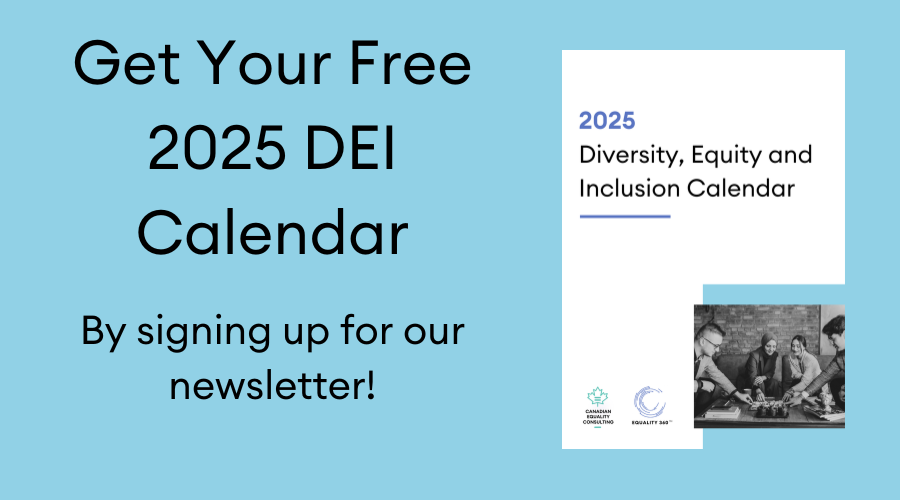
How to be an ally to minoritized groups in the workplace
The word “ally” comes from the Latin word “alligare,” which means “to bind to.” It is an individual or organization that unites with another in a mutually beneficial relationship, so that you can act together and protect each other in the face of opposition and oppression. Being an ally in your organization needs to be an active process, and looking at issues through intersectional lens is a useful tool. For instance, asking questions such as: how does a black employee with small children experience the workday? How does that differ from an indigenous employee with a disability? Different facets of identity may change how an employee is able to access and fulfil their role, and working as a workplace ally to create accommodations and considerations can make your workplace more equitable.
As another example, if you want your workplace to be more diverse, it is also important to ensure that you are appealing diverse hiring pools. This means asking hard questions about your existing accommodations and working options: do you offer flexible time off plans for employees with different holiday schedules? Do you offer accessible policies for employees with disabilities? Flexible work-from-home or hybrid options? Opportunities for skills training and career advancement? These pieces can make a big difference in the workforce you are able to hire and retain. Ask what approaches to work your senior leadership is supporting and modelling, and that these approaches to inclusion are being implemented every day
In addition to looking at your workplace using an interactional lens, to understand how to be a better ally to your employees and colleagues of colour in the workplace, also consider:
Knowing that allyship is a skill
You have to build your capability and knowledge over time, including making mistakes. Good allyship does not come naturally but must be worked at. For instance, “seeing something and saying something” in your workplace may an action that you are not used to engaging in, so building this skillset should be gradual with a commitment to organizational change and learning.
Research
If you are new to allyship, start your research to find actionable items to begin your journey. For instance, Syracuse University has education resources such as like the Library’s Racial Justice Resource Guide, the STOP Bias workshop that teaches you how to identify and address bias, the Conversations Around Race and Ethnicity (C.A.R.E.) circles and the free lecture series. All of this information is available from just one site, so the potential information available to you to learn about allyship is extensive. Remember to ask for recommendations or clarifications from a self-identified expert if needed.
Recognize feelings of discomfort as an opportunity for personal growth
If you make mistakes, and you will make mistakes, take them as an opportunity to learn, apologize, and grow. Accept feedback from people of colour and marginalized groups. Inequality has been their lived reality for far longer than you, so they are the experts in the room. Receive their insights with humility. Even if you are surprised or disappointed by their feedback, demonstrate that truth and equality are of the utmost importance for your organization in taking their insights. For actionable items, the United Way of Central New York a Racial Equity Habit Building Challenge that pushes you to get outside your comfort zone with daily challenges throughout the month of October.
Show up
Although it is easy to express support for Black Lives Matter and other racial equality work, it is often hard to move from words to action, particularly in the workplace. It’s easy to get stuck in a cycle of performative activism – saying the right words, without engaging in supporting action. Sometimes the “not my business” attitude of the workplace can be harmful. Learning how to address issues of race and inequality in a constructive manner in the workplace can help avoid these issues and feelings of uncertainty.
Ultimately, remember that diversity is not merely a checklist, but an overall commitment to creating organization-wide systemic change. As highlighted in “The Guide to Allyship” by the writer Amelie Lamont, when you are empathetic as an ally, you should:
- Take on the struggle as your own.
- Transfer the benefits of your privilege to those who lack it.
- Amplify voices of the oppressed before your own.
- Acknowledge that even though you feel pain, the conversation is not about you.
- Stand up, even when you feel scared.
- Own your mistakes and de-center yourself.
- Understand that your education is up to you and no one else.
For bespoke diversity and equality guidance, contact Canadian Equality Consulting and begin a discussion on how to make your workplace more responsive to the needs of your diverse employees.

